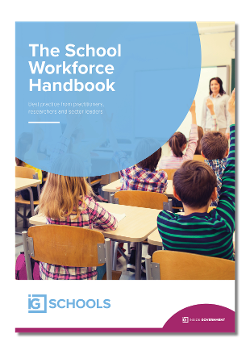The effective deployment of teaching assistants (TAs) in and around the classroom is often the vital factor in a child’s schooling success. Not only do they account for 25% of the workforce in the UK’s primary and secondary schools, but a total of £5 billion is spent on TAs every year, in England alone. Particularly for children with SEND, teaching assistants play a core role in their educational development, with primary school pupils spending 27% of their time, and secondary pupils spending 18% of theirs, interacting with a TA, compared to 2% and 1% respectively for average-attainers.
Despite this, the professional value of TAs has often been (wrongly) under-appreciated, or not considered to be of strategic importance for senior leadership teams with never-ending meeting agendas. That is, until now.
Great Expectations
After an arduous drafting and consultation process, the Professional Standards for Teaching Assistants were published in summer 2016. The broad range of stakeholders that this guidance, produced by a collection of sector leaders and practitioners, is intended for really highlights the need for all those invested in classroom inputs and outputs to play their part in improving the way that TAs can, and do, work in our schools.
While TAs are expected to work alongside other school staff in a common framework of expectations, it is school leaders who must recognise and promote the value of TAs working within that framework. Although they are not mandatory, if senior leadership teams take on board the Professional Standards recommendations, appraisal systems can be enhanced, resulting in benefits all round. As the skills and abilities of TAs are given a boost, their capacity to improve the attainment, and aid the development, of the pupils they are supporting will also increase.
Maximising Resources for Effective TA Deployment
Though this may sound a useful task, it also makes for a daunting one for all - particularly given the heavy lifting involved with meeting targets, studying progress measurements, and delivering a broad and balanced curriculum that those working in the sector are already juggling. Luckily, a huge range of helpful resources have been developed to assist your efforts for improvement, including by those involved in creating the Professional Standards.
As a TA seeking to understand how to maximise your practice, The TA's Guide to Effective Interaction will provide you with self-assessment materials to encourage greater reflection and consider how you can enhance your performance, and the outcomes of your pupils.
For senior leaders wondering where to start with such an overhaul of TA deployment, this step-by-step guide to Making Best Use of TAs will help provide you with some initial support on how to go about creating a leadership vision for TAs in your school.
This article was written by Lauren Powell, Head of Programme, IG Schools Team
For further insights on effective staff deployment, download our IG Schools Workforce Handbook.
